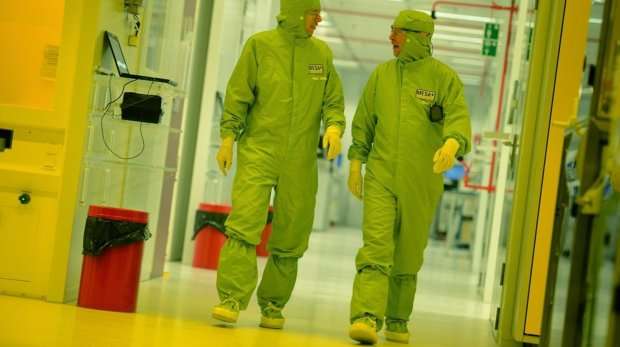Scientists of research institute MESA+ of Twente University have developed a technology for contactless deposition of liquids at nanoscale. In doing so, they make use of an electric field. Their technology will lead to new 3D-applications and can be of great value to, for example, cell research, nano-lithography and printable electronics. The findings of the Twente-based Mesoscale Chemical Systems Department have recently been published in the academic journal Applied Physics Letters.
In conventional techniques for liquid deposition, pressure is exerted on liquids, or capillary forces are used. This is done with the aid of a so-called AFM (Atomic Force Microscopy) 'dip-pen' probe or a 'nano-fountain pen' probe. These probes have been equipped with a tip which permeates the liquid. A disadvantage of this method is that several elements, such as humidity and liquid or surface properties, can affect the deposition negatively.
The contactless deposition method with the AFM nano-fountain pen probe ensures a reliable and quick deposition of liquids on a 50 nanometre scale. This is thanks to the use of an electric field. By applying a voltage, the liquids inside the tip are charged. The difference with the charge of the surface causes the liquid to be pulled out of the probe. A relatively low voltage (60 Volt) can already be sufficient. As the pulse duration increases, the volume of the liquid deposition will grow too.
The research now published was carried out in collaboration with the company SmartTip. This spin-off of the University of Twente develops and produces smart probes with new functionalities. Researcher Joël Geerlings of the Mesoscale Chemical Systems Department expects that many new possible 3D-applications lie ahead with the development of the new deposition method. "Think of a 3D-printer with nanoscale resolution that produces a scaffold (construction) for cell research." Other applications are arrays of DNA or proteins, photonic crystals, microfluidic structures, printed electronics and MEMS structures (micro-electromechanical systems) for sensors, for example."
More information: "Electric field controlled nanoscale contactless deposition using a nanofluidic scanning probe." Appl. Phys. Lett. 107, 123109 (2015); dx.doi.org/10.1063/1.4931354
Journal information: Applied Physics Letters
Provided by University of Twente
























